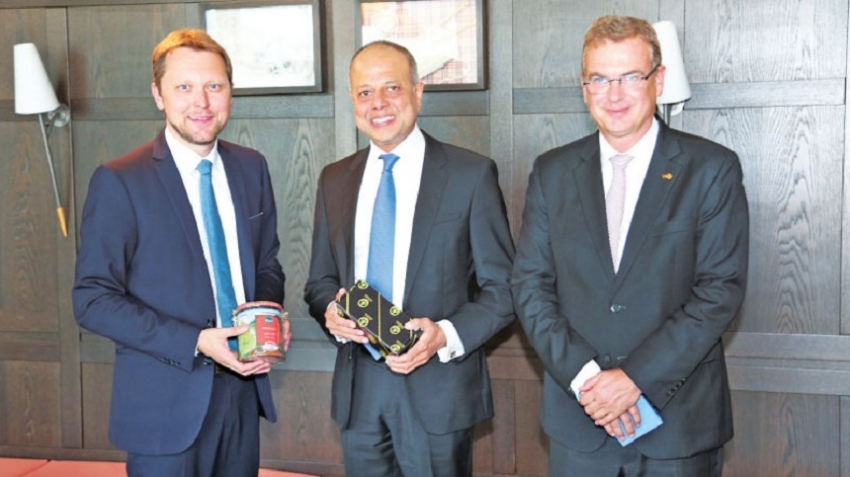Minister Sagala Ratnayaka said that in view of the country’s recovery from the Easter Sunday explosions, the government had embarked on ambitious plans to transform Sri Lanka into a vibrant maritime hub in the region. Addressing the opening of the Sri Lanka Pavilion at the Transport Logistics Fair 2019 in Germany on Tuesday, Ratnayaka said the heads of our security forces had assured the government that nearly 99% of these groups have been dismantled.“The country is fast returning to normalcy. Businesses have begun to operate as usual, while the tourism industry is witnessing a recovery,” he added.
“It is with this recovery in mind that we are striving to transform Sri Lanka into a maritime and logistics hub, tapping into the vast potential of our industry. Central to Sri Lanka’s ambitious goal of becoming a vibrant maritime hub in the South Asian region, its strategic location along the main east-west sea route in the Indian Ocean, at the crossroads of the fastest growing region of the world and in proximity to many emerging markets,” the Minister added.
Ratnayaka also said, “Colombo is the chosen destination for global carriers to serve global clients in South Asia - connecting the Indian subcontinent via Sri Lanka. This increases shipping options to all continents and global players by offering faster connectivity.
According to the Alphaliner rankings, the Port of Colombo has ranked the ‘Fastest Growing Container Port’ out of the 30 major ports in the world during the first half of 2018. It was an exciting moment for the maritime sector of Sri Lanka, as it was the first time the Port of Colombo reached the top of a global maritime ranking.”
“While acknowledging the growth we had achieved in terms of numbers, the Sri Lanka Ports Authority has also focused on fast-tracking strategic decisions pertaining to the expansion of the Colombo Port’s capacity. Only such decisions, in my view, would ensure that our growth is sustainable.
I must also add that the strategic location of the Hambantota International Port, provides advantages, not just for the shipping industry, but also for the import/export business in general, as the port could offer comparatively shorter timelines, coupled with effective and experienced handling.
Competitive labour costs, door-to-door delivery, attractive concessions and Free port facilities, ample space for storage and dry weather throughout the year, are among the factors providing the Hambantota International Port with a clear competitive edge in its quest to becoming a maritime and logistics hub.
Measures are also underway to revolutionize our transport sector, strengthening infrastructure connectivity in Sri Lanka.
Sri Lanka’s first multi model transport centre enabling travellers to easily switch between rail and bus services, was opened at the entrance to the expressway interchange in Kottawa, a suburb southeast of Colombo, in April this year.
The Light Rail Transit System has also been initiated in Colombo with the objective of increasing transportation capacity and improving the safety and comfort of public transportation. The LRT system would set up 16 stations distributed over 15.7 kilometers of track in and around Colombo.
Our government is working on an ambitious plan to add another 145 kilometers to the expressway system in Sri Lanka by the end of this year. This includes a 96 km stretch of the Southern Expressway from Matara to Hambantota, a 9.63 km stretch of Outer Circular Expressway from Kadawatha to Kerawalapitiya and the second phase of the Central Expressway from Mirigama to Kurunegala.
This demonstrates that our government works with a holistic and harmonizing approach when it comes to the development of transport, logistics and infrastructure.
I am particularly happy to be here at the Transport and Logistics Fair 2019, which is a great opportunity for Sri Lankan representatives to network with the international business community. I am certain that relationships we form today would go a long way, cementing our goodwill and realizing our shared aspirations and goals.”




















